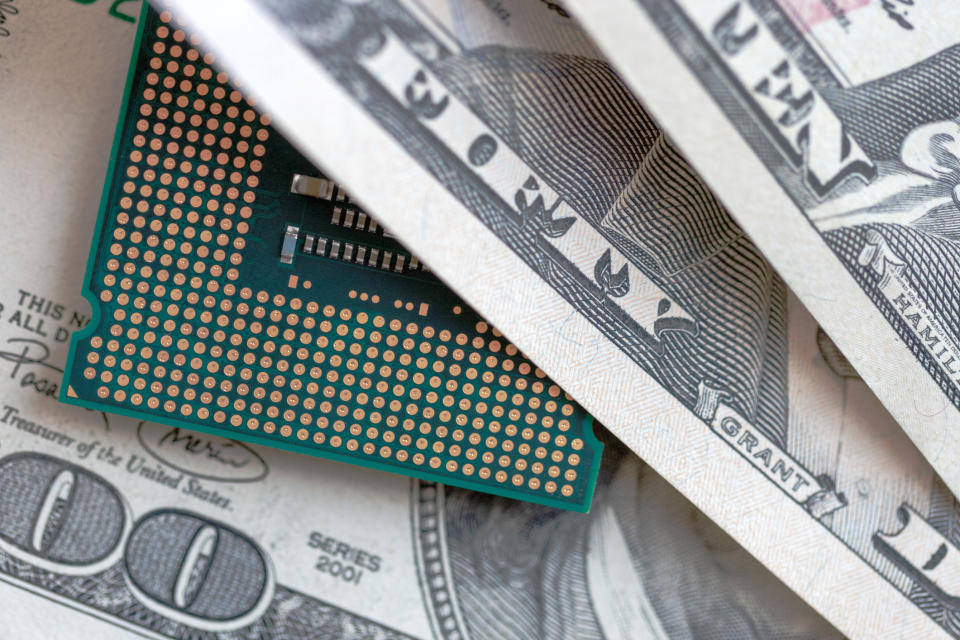

It’s no secret that Artificial Intelligence (AI) stocks have dominated the market for the last few years. With firms like PwC — one of the “big four” accounting firms — making claims that AI could add $15.7 trillion to the global economy by 2030 — the hype makes sense.
The revolution’s poster child, Nvidia (NASDAQ: NVDA), saw its stock skyrocket nearly 1000% from late 2022 to today, but the last few months have not been as kind. After reaching its highest peak in June, shares of Nvidia are down about 10%. More significant market fears mixed with slower growth have caused some to cool on the once red-hot stock. So, where to go from here?
Nvidia’s AI Summit is a big day for the company and the industry
As the de facto leader of the entire industry, Nvidia needs to continue to do just that: lead. The 2024 AI Summit, which begins October 7, is a chance for the company to bring together some of the biggest faces and best minds in the industry to help push AI forward, all while keeping itself front and center. It’s a chance to communicate Nvidia’s vision not just to other industry leaders, but to the public at large.
One of the primary questions investors have for the company — and it’s a very legitimate one — is: Are the real-world applications of AI that impactful? Is the incredible cost of AI hardware worth the investment? The summit will be a chance for Nvidia to showcase the myriad ways AI can be used to return real value. It’s a chance to justify the enormous cost of its chips and, ultimately, the price of its shares.
The event in and of itself is unlikely to move the needle, but it may help ease some fears and get investors thinking about the possibilities and power of AI. Luckily, the event isn’t happening in a vacuum. Here are a few reasons why Nvidia is in a prime position to capitalize on the event.
1. Nvidia’s Blackwell chips are coming
In Nvidia’s only major snafu since the AI boom took off, the company announced its latest line of chips, dubbed Blackwell, was delayed. Issues in its manufacturing meant they wouldn’t be shipped on time. Nvidia assured that shipments would only be delayed a quarter. Despite these reassurances, some investors worried the issues were more fundamental and the delay would be longer.
It seems those fears were unfounded. According to a recent report by Tom’s Hardware, the company is ready to ship the first batch as early as December, only about six weeks behind the original schedule, although these reports have yet to be confirmed by Nvidia. If true, it would do a lot to ease investors’ fears and show that the company went above and beyond in fixing its mistake.
Still, even if they don’t ship until later in the quarter, the rollout will be huge for the company regardless. Their impact will be felt immediately, with billions in sales expected before the end of its Q4.
2. Nvidia’s vision is its greatest asset
It’s easy to get bogged down in numbers and fixate on balance sheets and income statements, and while these are extremely important when evaluating a business, certain intangibles are often what makes a company great, like vision. Nvidia has it in spades. Under the leadership of CEO Jensen Huang, the company has been at the forefront of several macro movements in tech. Huang saw back in the early 90s that computer graphics would be huge. The company’s GPUs — graphics processing units — are a big part of what enabled the video game industry to evolve to where it is today.
This vision is why the company controls roughly 90% of today’s AI chip market. Nvidia saw that its GPUs could do much more than push the bounds of computer graphics; they could power a new technological revolution. It’s why the company caught its competition sleeping. Since the current AI boom took off in late 2022, Nvidia’s chips have consistently been miles ahead. Other chipmakers have been playing catch-up ever since.
There was relative parity between Nvidia and its longtime rival AMD for decades. Not so anymore; last year, Nvidia made more in profit than AMD made in total revenue. The difference right now is stark, but remember, if Nvidia is profiting much more than its rival, it can then afford to spend more on research and marketing to widen its moat and fend off competitors.
3. Considering its prospects, Nvidia is reasonably priced
I know I just said not to get bogged down in the numbers, but they are still important. How is the market valuing Nvidia right now? At a price-to-earnings ratio (P/E) of 56, Nvidia isn’t cheap, but given its current pace of growth, a trailing P/E isn’t really the best metric for us. Its forward P/E — that is, a P/E that accounts for its expected earnings in the next 12 months rather than the last 12 — is just above 30. That’s not bad in the world of tech. It’s just about where Apple and Amazon sit.
Another useful valuation is the PEG ratio, which you get by dividing a company’s P/E by its expected earnings growth. This is an excellent metric for companies with a lot of growth potential. As a very general rule, a PEG under 1 is what we’re looking for. Nvidia’s is 0.94.
Nvidia has plenty of room to deliver the kind of growth that can justify its current valuation. To be sure, metrics are not the be-all and end-all. They are imperfect instruments, and of course, metrics that rely on expected earnings are especially imperfect — the future is anything but guaranteed. I believe Nvidia will continue to outperform the market for some time.
Should you invest $1,000 in Nvidia right now?
Before you buy stock in Nvidia, consider this:
The Motley Fool Stock Advisor analyst team just identified what they believe are the 10 best stocks for investors to buy now… and Nvidia wasn’t one of them. The 10 stocks that made the cut could produce monster returns in the coming years.
Consider when Nvidia made this list on April 15, 2005… if you invested $1,000 at the time of our recommendation, you’d have $752,838!*
Stock Advisor provides investors with an easy-to-follow blueprint for success, including guidance on building a portfolio, regular updates from analysts, and two new stock picks each month. The Stock Advisor service has more than quadrupled the return of S&P 500 since 2002*.
*Stock Advisor returns as of September 30, 2024
John Mackey, former CEO of Whole Foods Market, an Amazon subsidiary, is a member of The Motley Fool’s board of directors. Johnny Rice has no position in any of the stocks mentioned. The Motley Fool has positions in and recommends Advanced Micro Devices, Amazon, Apple, and Nvidia. The Motley Fool has a disclosure policy.
3 Reasons to Buy Nvidia Stock Before October 7 was originally published by The Motley Fool
Source link




